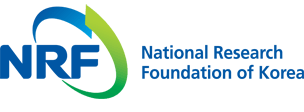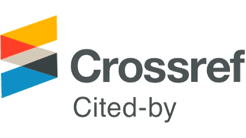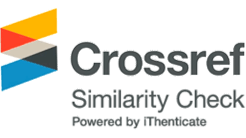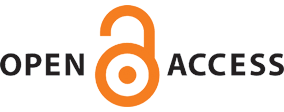-
Article
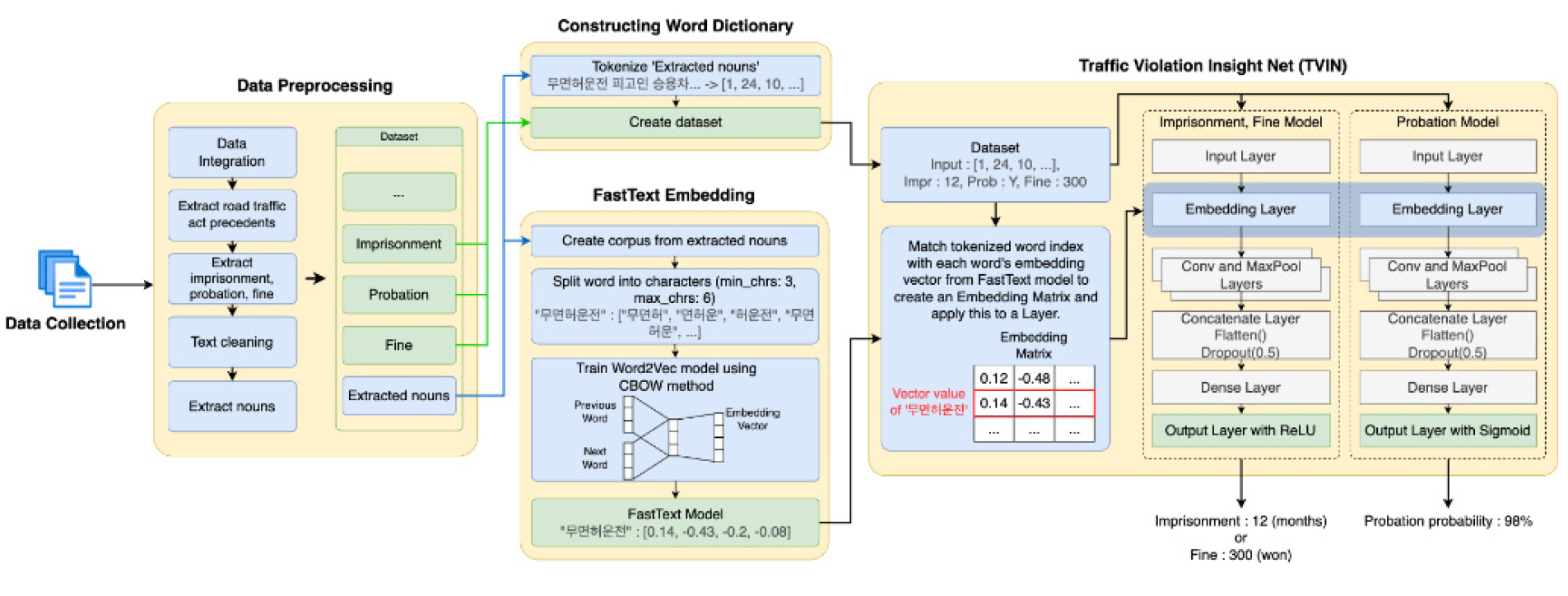
-
Natural Language Processing-based Judgement Prediction System for Road Traffic Accidents: Focused on Text Information for Traffic Accident Situations
자연어처리 기반의 도로교통사고 판결예측 시스템: 교통사고상황 텍스트 정보 활용을 중심으로
-
Hyunsik MIN, Junyeong YUN, Byeongjoon NOH
민현식, 윤준영, 노병준
- Traffic accident scenarios are inherently complex, requiring substantial time and effort to analyze textual information pertaining to the causes, circumstances, and outcomes …
교통사고 상황은 대체로 매우 복잡하여 법적 판단을 위해 사고의 원인, 경위, 결과 등의 텍스트 정보를 분석하는 것은 높은 시간 비용이 요구되고, 오류의 …
- Traffic accident scenarios are inherently complex, requiring substantial time and effort to analyze textual information pertaining to the causes, circumstances, and outcomes for legal adjudication. Such complexity also introduces a potential for human errors. Therefore, it is necessary to devise an efficient system for analyzing such textual data. In this study, we propose a natural language processing (NLP)-based system that can predict judicial verdicts in traffic accident cases. The proposed system leverages NLP techniques to extract and analyze information related to traffic laws and regulations from textual descriptions of traffic accident scenarios, subsequently predicting sentencing information such as probation status and fines. The proposed system mainly consists of three parts: 1) data collection and preprocessing, 2) construction of a word dictionary and embedding, and 3) verdict prediction. First, traffic accident-related judgments are collected from various legal databases. Subsequently, key information such as imprisonment terms, probation status, and fines is extracted from the collected judgments, and a domain-specific word dictionary tailored to traffic accident cases is built using embedding techniques. Finally, the legal verdicts are predicted using a deep learning model. In our experiment, we validated the feasibility and applicability of the proposed system by implementing and applying it to approximately 37,406 traffic accident-related judgments, resulting in accuracies of 96.13%, 94.85%, and 95.49% for imprisonment, probation status, and fines, respectively.
- COLLAPSE
교통사고 상황은 대체로 매우 복잡하여 법적 판단을 위해 사고의 원인, 경위, 결과 등의 텍스트 정보를 분석하는 것은 높은 시간 비용이 요구되고, 오류의 가능성을 배제할 수 없기에 이러한 텍스트 정보를 효율적으로 분석하기 위한 시스템이 필요하다. 이러한 문제를 해결하기 위해서 본 연구에서는 교통사고 상황에 대한 법원 판결을 예측하기 위한 자연어 처리 시스템을 제안한다. 제안하는 시스템은 자연어 처리 방법론을 활용하여 교통사고 상황에 관한 텍스트 정보로부터 도로교통법 등 교통법규 관련 정보를 분석하여 해당 상황에 대한 형량 정보(집행유예 여부 및 벌금액 등)를 예측한다. 제안하는 시스템은 크게 1) 데이터 수집 및 전처리, 2) 단어 사전 구축 및 임베딩, 3) 판결 예측의 세 과정으로 구분된다. 먼저, 데이터 수집 및 전처리 과정에서는 다양한 법률 데이터베이스로부터 교통사고 관련 판결문을 수집 및 전처리한다. 다음으로 징역 및 집행유예 여부, 벌금액 등과 같은 판결문 내의 중요 정보를 추출하고, 임베딩을 통해 교통사고 판례에 특화된 단어 사전을 구축한다. 마지막으로 판결 예측 모델에서는 딥러닝 모델을 통해 판결문으로부터 형량을 예측한다. 본 연구의 실험에서는 약 37,406건의 도로교통법 관련 판결 데이터를 활용하여 징역, 집행유예, 벌금 결과를 예측하여 제안하는 시스템의 실현가능성을 검증하였으며 그 결과는 각각 96.13%, 94.85%, 95.49%의 정확도로 나타났다.
-
Natural Language Processing-based Judgement Prediction System for Road Traffic Accidents: Focused on Text Information for Traffic Accident Situations
-
Article

-
Impact of Elderly-Caused Crashes after Voluntary Driver’s License Return
운전면허 자진반납제도에 따른 고령 운전자 유발 교통사고 변화 분석
-
Dahee HONG, Sanjin HAN
홍다희, 한상진
- Due to the increase in the elderly population, traffic crashes caused by elderly drivers have risen by an annual average of 3.7% …
고령 인구의 증가로 고령 운전자가 유발하는 교통사고 발생 건수는 최근 5년간 연평균 3.7% 증가하였다. 고령 운전자가 유발하는 교통사고를 줄이기 위해 지방자치단체는 고령 …
- Due to the increase in the elderly population, traffic crashes caused by elderly drivers have risen by an annual average of 3.7% over the past five years. To address this issue, local governments have been implementing a voluntary return program for older drivers' licenses since 2019, supported by the National Police Agency and offering benefits such as one-time transportation subsidies. This study aimed to analyze the impact of the voluntary return of elderly drivers' licenses on reducing traffic crashes caused by elderly drivers. This study compares traffic crashes, fatalities, and serious injury crashes between local governments that implemented the voluntary driver’s license return program and those that did not. The differences were tested using chi-square analysis. The results showed that the voluntary return of elderly driver’s licenses has a significant impact on reducing traffic crashes caused by elderly drivers, particularly in terms of traffic fatalities crashes and serious injury crashes. Additionally, it was observed that drivers aged 75 or older experienced the greatest reduction in crashes after returning their licenses, indicating a need to encourage this age group to return their licenses. Moreover, it was found that the impact of reducing crashes due to the voluntary return of elderly driver’s licenses was greater in rural areas than in urban areas. However, because accessibility and mobility for the elderly are lower in rural areas compared to urban areas, the rate of license return is also lower. Therefore, it is necessary to develop various measures to increase the voluntary driver’s license return rate in rural areas, where the potential for crash reduction is substantial. On the other hand, it was also found that among elderly drivers over 80 years old, the reduction in crashes due to the return of their driver’s licenses was more pronounced in urban areas. Hence, it is necessary to encourage the voluntary return of driver’s licenses among the elderly in urban areas as well.
- COLLAPSE
고령 인구의 증가로 고령 운전자가 유발하는 교통사고 발생 건수는 최근 5년간 연평균 3.7% 증가하였다. 고령 운전자가 유발하는 교통사고를 줄이기 위해 지방자치단체는 고령 운전자가 자발적으로 운전면허를 반납하는 운전면허 반납제도를 경찰청과 함께 2019년부터 시행 중이다. 본 연구는 고령자 운전면허 자진반납이 고령 운전자가 유발하는 교통사고에 미치는 영향을 분석하기 위해 시도되었다. 이를 위해 운전면허 자진반납 제도가 시행된 시·군 지자체와 그렇지 않은 시·군 지자체의 고령 운전자가 유발한 교통사고 건수, 사망사고 건수, 중상사고 건수를 비교하고 그 차이를 카이제곱 분석으로 검정하였다. 그 결과, 운전면허반납은 고령 운전자가 유발하는 사망사고 건수 및 중상사고 건수 감소에 크게 영향을 미치는 것으로 나타났다. 반면 고령 운전자가 유발하는 교통사고 건수 감소에는 영향을 미치지 못했다. 이는 고령자 운전면허 자진반납제도가 고령 운전자가 유발하는 인피 사고 감소에 효과가 있다는 것을 의미한다. 또한 운전면허 반납으로 사고감소 효과가 가장 큰 연령은 75세 이상 고령자였으며, 도시지역보다 지방지역에서 더 큰 것으로 나타났다. 따라서 75세 이상 고령자와 지방지역을 대상으로 고령 운전자 자진반납을 유도할 필요가 있다. 하지만 지방 지역은 고령자의 대중교통 서비스가 도시지역보다 낮아 운전면허 반납률이 낮은 편이다. 따라서 향후 지방 지역의 운전면허 반납률을 높이기 위한 다양한 인센티브가 마련될 필요가 있다.
-
Impact of Elderly-Caused Crashes after Voluntary Driver’s License Return
-
Article

-
Analysis of Changes in Economic Effects of Transport Social Overhead Capital using Input-Output Approach
산업연관분석을 활용한 교통부문 사회간접자본의 경제적 파급효과 변화 분석
-
Do-Hun KIM, Yon Ho ROH, Hun-Koo HA
김도훈, 노연호, 하헌구
- Social overhead capital plays a crucial role in economic development and social integration, profoundly impacting our lives. It is one of the …
교통 사회간접자본은 경제 발전과 사회적 통합에 필수적인 요소로 작용하여, 우리 삶의 여러 측면에 깊은 영향을 미친다. 이는 국가 경쟁력과 국민 삶을 책임지는 …
- Social overhead capital plays a crucial role in economic development and social integration, profoundly impacting our lives. It is one of the vital industries responsible for national competitiveness and the well-being of citizens. Using input-output tables, we reorganized the transportation infrastructure and operations industries related to social overhead capital into 22 sectors and analyzed them. The analysis spans 20 years, from 2000 to 2020, examining changes in production-inducement effects, value-added inducement effects, supply shortage effects, and forward and backward linkage effects. The results reveal that in the transportation infrastructure sector, road construction's production-inducing effect increased, while rail construction showed a decreasing trend. Regarding transportation operations, the production-inducing impact of road transport decreased in 2020, and rail transport also showed a declining trend. The value-added inducement effect increased for rail construction but showed a decreasing trend for road and seaport construction. In the transport operations sector, the impact of transport auxiliary services was significant. Regarding the supply shortage effect, road transport, and sea transport auxiliary services showed strong ripple effects. Industries associated with social overhead capital primarily exhibit high backward linkage effects. This study is expected to serve as a foundation and fundamental data for efficiently responding to rapidly changing transportation trends by understanding the influence and changes of indirect transportation capital on other industries in Korea.
- COLLAPSE
교통 사회간접자본은 경제 발전과 사회적 통합에 필수적인 요소로 작용하여, 우리 삶의 여러 측면에 깊은 영향을 미친다. 이는 국가 경쟁력과 국민 삶을 책임지는 중요한 산업 중 하나이다. 본 연구에서는 산업연관표를 활용하여 교통사회 간접자본에 해당하는 교통시설과 교통운영에 해당하는 산업을 선택하고 22개 부문으로 재구성하여 분석하였다. 분석 기간은 2000년부터 2020년까지 약 20년 간 생산유발효과, 부가가치유발효과, 공급지장효과, 전· 후방연쇄효과의 변화를 파악하였다. 분석 결과, 교통시설 부문에서는 도로시설의 생산유발효과가 증가하는 반면 철도시설은 감소하는 경향을 보였다. 교통운영 측면에서도 도로운송서비스의 생산유발효과는 2020년에 감소하였고 철도운송서비스도 감소하는 추세를 보였다. 부가가치유발효과는 철도시설에서는 증가하였지만 도로시설과 항만시설은 감소하는 경향이 나타났다. 교통운영부문에서는 운송보조서비스업의 효과가 큰 것으로 나타났다. 공급지장의 경우 도로운송서비스와 수상운송보조서비스가 미치는 파급효과에서 강한 영향력이 나타났다. 교통사회간접자본에 해당하는 산업은 주로 후방 연쇄효과가 높은 산업임을 확인하였다. 본 연구는 우리나라의 교통사회 간접자본이 다른 산업에 미치는 영향력과 변화를 파악하여, 빠르게 변하는 교통 트렌드에 효율적으로 대응할 수 있는 기반과 기초자료를 제공한다.
-
Analysis of Changes in Economic Effects of Transport Social Overhead Capital using Input-Output Approach
-
Article

-
A Study on the Development of Evaluation Items Driving Capability of Autonomous Vehicle Based on Traffic Act
도로교통법 기반 자율주행차 운전능력 평가 항목 개발 연구
-
Taehee JIN, Yunwon KANG, Dajeong HAN, Gwangsoo BAE
진태희, 강윤원, 한다정, 배광수
- Autonomous driving technology is being standardized internationally, primarily by Europe and the United States, and these international standards are being applied to …
자율주행 기술은 유럽과 미국을 중심으로 국제 표준이 수립되고 있으며, 이러한 국제 표준은 실제 자동차의 형식승인에 적용되고 있다. 2022년 ISO 34502:2022는 물리적 위험 …
- Autonomous driving technology is being standardized internationally, primarily by Europe and the United States, and these international standards are being applied to the type approval of actual vehicles. ISO 34502:2022 classifies physical risk factors into three categories: perception, traffic, and vehicle control, and describes the safety evaluation content. However, there is a lack of detailed evaluation based on individual provisions of traffic acts. Since autonomous vehicles must also comply with traffic regulations, this study aims to structure evaluation items for assessing autonomous driving competency based on domestic traffic acts. A review of the latest preceding studies and international standards related to the evaluation of autonomous vehicles revealed that various methodologies from the field of artificial intelligence in computer science are being applied, such as representing the consensus concepts of the real world in a form understandable by computers. This indicates the necessity for systematic structuring of traffic regulations similar to physical risk factors. As a major result of this paper, we proposed an evaluation item classification system consisting of 6 major categories, 22 middle categories, and 84 subcategories, covering the entire current road traffic acts, through a comparative analysis of international road traffic acts agreements and the evaluation items of the Korean driver’s license test. In the future, if additional detailed evaluation content for traffic regulation evaluation items and research on quantification used in knowledge representation understandable by computers are conducted based on the structured evaluation items proposed in this study, a sophisticated evaluation system for autonomous driving competency based on road traffic acts can be established.
- COLLAPSE
자율주행 기술은 유럽과 미국을 중심으로 국제 표준이 수립되고 있으며, 이러한 국제 표준은 실제 자동차의 형식승인에 적용되고 있다. 2022년 ISO 34502:2022는 물리적 위험 요인을 인지, 교통, 차량 제어의 세 가지로 분류하여 안전 평가 내용을 기술하고 있으나, 교통 법규에 대한 세부 평가는 부족하다. 자율주행자동차도 교통 법규를 준수해야 하기 때문에 본 연구는 국내 교통 법규를 기반으로 자율주행 운전 능력 평가를 위한 평가 항목을 구조화하는 것을 목적으로 한다. 자율주행 자동차 평가와 관련된 최신 선행연구와 국제 표준을 검토한 결과, 사람들이 현실 세계에 대한 합의된 개념을 컴퓨터가 이해할 수 있는 형태의 지식으로 표현하는 등 컴퓨터 공학의 인공지능 분야의 다양한 방법론이 적용되고 있음을 발견하였다. 이는 향후 물리적 위험 요인과 같이 교통 법규에 대한 체계적인 구조화가 필요함을 시사한다. 본 연구에서는 도로교통법에 관한 국제협약과 우리나라 운전면허시험의 평가 항목을 비교 분석하여, 대분류 6개, 중분류 22개, 소분류 84개로 구성된 평가 항목 분류 체계를 제시하였다. 이 체계는 현행 도로교통법 전체를 포괄할 수 있다. 향후, 본 연구에서 제시된 구조화된 평가 항목을 바탕으로 ISO 34502의 물리적 위험 요인에 상세한 세부 내용이 제시된 것처럼, 교통 법규 평가 항목에 대한 추가적인 세부 평가 내용과 컴퓨터가 이해할 수 있는 형태의 지식 표현에 관한 정량화 연구가 수행된다면, 도로교통법을 기반으로 하는 고도화된 자율주행차 운전 능력 평가 체계가 마련될 수 있을 것으로 판단된다.
-
A Study on the Development of Evaluation Items Driving Capability of Autonomous Vehicle Based on Traffic Act
-
Article
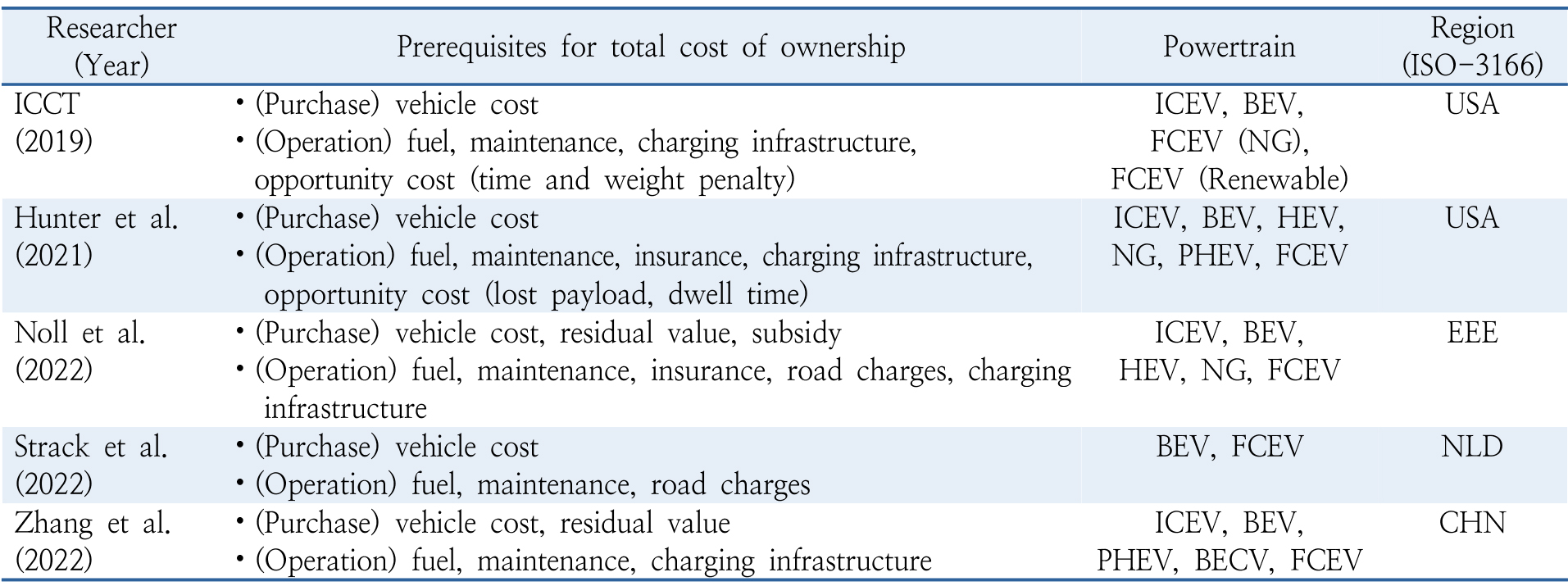
-
Economic and Environmental Analysis of Battery Electric, Hydrogen Fuel Cell Heavy-Duty Trucks
전기 · 수소 대형 화물차의 경제성 및 환경성 분석
-
So Yun KIM, Young-Hwan AHN
김소윤, 안영환
- In order to achieve carbon neutrality in road transport, the transition demand to zero-emission vehicles is significant, as it accounts for about …
국내 수송부문 온실가스 배출량 중 도로 부문의 비중은 약 97%로 탄소중립 달성을 위한 친환경차 전환이 추진되고 있다. 특히 대형 화물차는 연간 주행거리가 …
- In order to achieve carbon neutrality in road transport, the transition demand to zero-emission vehicles is significant, as it accounts for about 97% of greenhouse gas emissions in domestic transportation. In particular, heavy-duty trucks contribute significantly to greenhouse gas emissions, because of their higher annual mileage and usage of diesel engine. However, freight trucks are operated for the purpose of profit. Therefore, it is crucial to conduct research on the economic feasibility of heavy-duty trucks transitioning from internal combustion engines. This study analayzed total cost of ownership for zero-emission trucks, projecting total cost of ownership parity with internal combustion engine trucks by 2040. In addition, the greenhouse gas reduction effect, which is the ultimate goal of conversion to zero-emission trucks, was compared through well-to-wheel analysis. The result shows that fuel prices are pivotal in reaching total cost of ownership parity for zero-emission trucks. For the successful conversion of heavy-duty trucks to zero-emission, it is imperative to form competitive fuel prices with internal combustion engine vehicles. Policy implementations that facilitate the complementary distribution of hydrogen fuel cell trucks and battery electric trucks should also be a prerequisite. Furthermore, the decarbonization of fuel production concurrently with the transition to zero-emission vehicles is essential since the greenhouse gas reduction effect of zero-emission trucks varies depending on the increase of renewable energy generation and the development of clean hydrogen production technology.
- COLLAPSE
국내 수송부문 온실가스 배출량 중 도로 부문의 비중은 약 97%로 탄소중립 달성을 위한 친환경차 전환이 추진되고 있다. 특히 대형 화물차는 연간 주행거리가 길고 대부분 경유차로 구성된 특성상 배출 비중이 높아 친환경차 전환이 필요하다. 그러나 화물차는 자가용 승용차와 다르게 이윤 창출을 목적으로 운행되는 차량임에 따라 전환 시 경제성 확보가 중요하다. 본 연구는 친환경 대형 화물차의 총소유비용을 분석하고, 경유 화물차와 친환경 화물차의 총소유비용이 등가가 되는 ‘총소유비용 패리티’ 도달 시점을 2040년까지 전망하였다. 또한, 연료주기 분석을 통해 친환경차 전환의 궁극적 목표인 온실가스 감축 효과를 비교하였다. 총소유비용 분석 결과 연료비용이 친환경 화물차의 총소유비용 패리티 도달 시점에 가장 큰 영향을 미치는 것으로 나타났다. 이에 친환경 화물차 전환을 위해서는 내연기관 대비 경쟁력 있는 연료 가격 형성이 중요하며, 수소트럭과 전기트럭을 상호보완적으로 보급하는 정책이 필요하다. 그리고 온실가스 감축효과는 국내 발전원 비중 및 수소 생산방식에 따라 저감량이 상이하므로, 친환경 화물차 전환과 더불어 연료 생산단계의 이산화탄소 배출을 줄이기 위한 노력이 병행되어야 한다.
-
Economic and Environmental Analysis of Battery Electric, Hydrogen Fuel Cell Heavy-Duty Trucks
-
Article
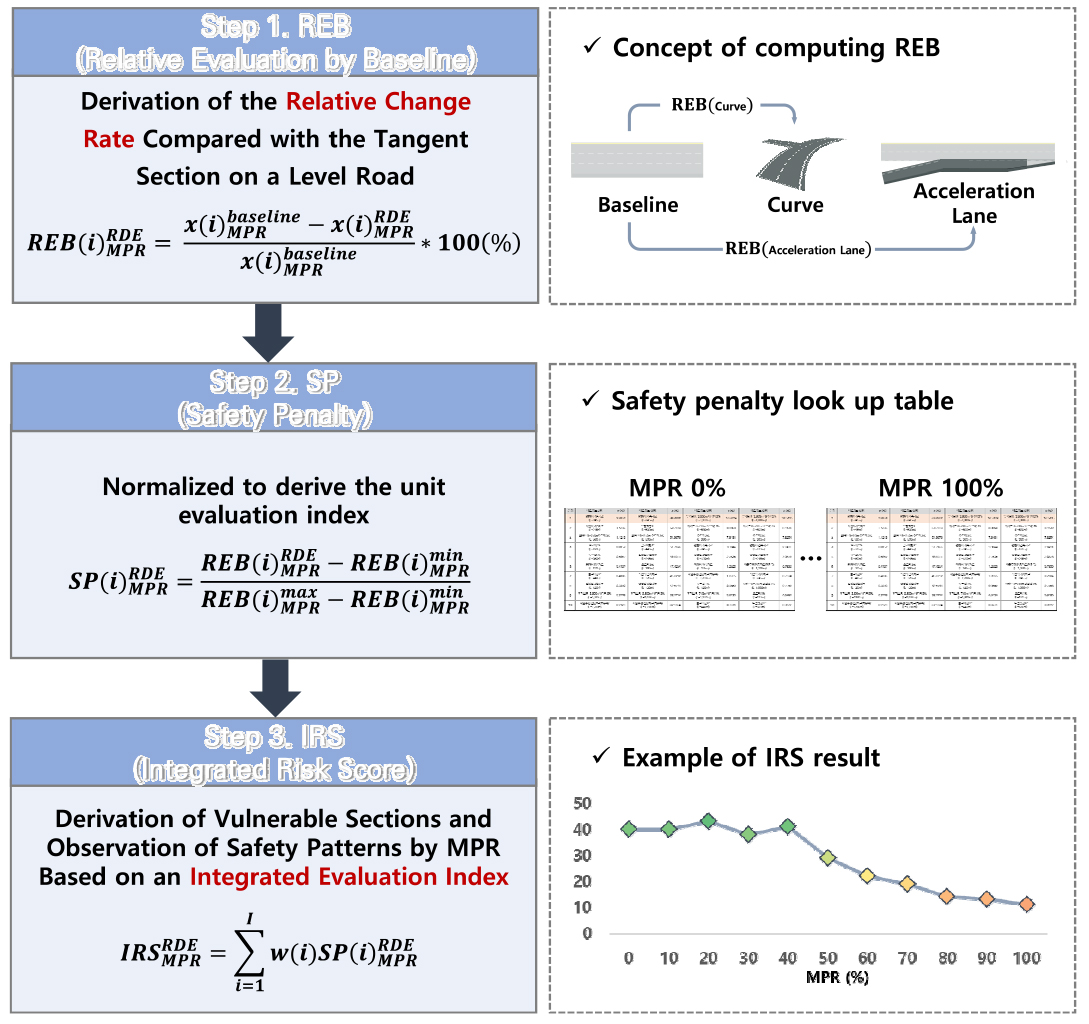
-
Evaluating Road Infrastructure Safety in Mixed Traffic Conditions of Autonomous Mobility and Manual Vehicles : A Comprehensive Simulation Approach
자율주행 모빌리티와 일반 차량 혼재상황에서 교통류 및 주행 시뮬레이션 연계를 통한 도로 인프라 안전성 평가
-
Yeseo GU, Young JO, Cheol OH, Jeahong PARK, Dukgeun YUN
구예서, 조영, 오철, 박재홍, 윤덕근
- The expected persistence of mixed traffic environments, consisting of both autonomous vehicles and manually-driven vehicles, necessitates the development of methodologies to evaluate …
자율주행 차량의 주행행태는 운전자 조작에 의한 비자율주행 차량의 주행과 근본적인 차이가 존재한다. 혼합교통류 환경이 향후 수십 년간 지속될 것으로 전망됨에 따라, 자율-비자율 …
- The expected persistence of mixed traffic environments, consisting of both autonomous vehicles and manually-driven vehicles, necessitates the development of methodologies to evaluate the driving safety of uninterrupted flow road infrastructure under mixed conditions. This study develops an integrated risk score (IRS) to evaluate the relative safety of various road alignments and facilities under different market penetration rates (MPRs) of autonomous vehicles. The research utilizes driving and traffic simulations to analyze the safety of 41 road alignments and facilities across various autonomous vehicle market penetration rate scenarios. The analysis results show that the modified Intelligent Driver Model (IDM) parameters for manually-driven vehicles following autonomous vehicles show increased safe time headway and reduced maximum acceleration and desired deceleration due to the consistent driving behavior of the leading autonomous vehicles. The application of these modified parameters in VISSIM facilitated the analysis of the relative safety of different road design elements. The findings revealed that regardless of the MPR of autonomous vehicles, parallel acceleration lanes were the most vulnerable. Four distinct driving safety patterns were observed: low variability, downward trend, upward trend, and convex. This study presents a comprehensive methodology for assessing road infrastructure safety in mixed traffic environments, considering different autonomous vehicle market penetration rates, and aims to contribute to the enhancement of driving safety in future road environments with the increasing adoption of autonomous vehicles.
- COLLAPSE
자율주행 차량의 주행행태는 운전자 조작에 의한 비자율주행 차량의 주행과 근본적인 차이가 존재한다. 혼합교통류 환경이 향후 수십 년간 지속될 것으로 전망됨에 따라, 자율-비자율 혼합교통류 환경에서 도로 인프라 주행안전성을 평가하기 위한 방법론을 개발할 필요성이 있다. 본 연구에서는 연속류 도로선형 조건 및 시설에 따른 상대적 안전성을 평가하기 위한 통합 평가지표 integrated risk score(IRS)를 개발하였다. 주행-교통 시뮬레이션을 연계하여 41개의 평가 대상 선형 및 시설에 대한 자율주행 차량의 시장 점유율에 따른 주행안전성 취약 구간을 분석하였다. Multi agent driving simulator(MADS) 실험을 통해 자율주행 차량을 추종하는 비자율주행 차량의 거동을 현실적으로 모사하였고, 자율차의 시장 점유율 변화에 따른 교통류 안전성을 분석하기 위해 교통 시뮬레이션 분석을 수행하였다. 분석 결과, 자율주행 차량을 추종하는 비자율주행 차량의 수정된 intelligent driver model 파라미터는 더 큰 안전 거리를 유지하고 선행 차량의 일관성 있는 주행행태로 인해 가속 및 감속이 감소한 것으로 도출되었다. 수정된 파라미터를 VISSIM에 적용하여 도로 설계 요소별 상대적 안전성 분석한 결과, 자율주행 차량의 시장 점유율에 관계 없이 평행식 가속차로가 가장 취약한 것으로 도출되었다. 각 평가지표와 IRS 순위는 자율주행 MPR 변화에 따라 변동 미미, 우하향, 우상향, 볼록형 4가지 주행안전성 패턴이 관찰되었다. 본 연구는 향후 자율주행 차량 도입이 확대되는 미래도로 환경의 주행안정성 증진에 기여할 것으로 기대된다.
-
Evaluating Road Infrastructure Safety in Mixed Traffic Conditions of Autonomous Mobility and Manual Vehicles : A Comprehensive Simulation Approach
-
Article

-
Analyzing the Factors Influencing Car Dependency Using the Theory of Planned Behavior
계획행동이론을 이용한 승용차 의존성 요인 분석
-
Hyeongyun KI, Justin S. CHANG
기현균, 장수은
- Despite steady investment in public transportation, the number of passenger car users has not significantly decreased. Moreover, the number of individuals dependent …
대중교통에 대한 꾸준한 투자에도 불구하고 승용차 이용자 수는 크게 줄어들지 않고 있다. 여기에 코로나 19의 경험, 예전보다 강해진 사생활 보호에 대한 요구 …
- Despite steady investment in public transportation, the number of passenger car users has not significantly decreased. Moreover, the number of individuals dependent on cars for travel has increased due to the COVID-19 pandemic and a heightened demand for privacy. This study aims to understand the factors influencing the travel intentions of car dependents. The basic model of the Theory of Planned Behavior (TPB) was employed, and a questionnaire survey was conducted among car dependents. A structural equation model was then constructed to analyze the factors affecting their travel intentions. The analysis revealed that the behavioral belief system positively influenced attitudes, the normative belief system influenced subjective norms, and the control belief system influenced perceived behavioral control. Additionally, attitudes, subjective norms, and perceived behavioral control positively affected behavioral intentions. Among these three latent variables, attitudes had a greater influence on behavioral intentions than subjective norms or perceived behavioral control. In other words, perceptions of the surrounding environment and confidence in one's own control have a relatively minor impact, whereas a favorable attitude towards passenger cars significantly increases dependence due to the various conveniences provided by car use. Therefore, to change citizens' car-dependent behavior, efforts are needed to counteract the favorable attitude based on convenience.
- COLLAPSE
대중교통에 대한 꾸준한 투자에도 불구하고 승용차 이용자 수는 크게 줄어들지 않고 있다. 여기에 코로나 19의 경험, 예전보다 강해진 사생활 보호에 대한 요구 등으로 차량에 의존해서 통행하는 승용차 의존자(Car dependency)가 늘어나고 있다. 이 연구에서는 승용차 의존자의 통행 의도에 미치는 요인과 요인별 영향의 정도를 파악하고자 한다. 이를 위해 계획행동이론(Theory of Planned Behavior, TPB)의 기본모형을 활용했으며, 승용차 의존자를 대상으로 설문조사를 시행하였다. 조사결과를 바탕으로 구조방정식을 구축해 승용차 의존자들의 통행 의도에 미치는 요인을 분석하였다. 분석 결과, 행동신념체계는 태도에, 규범신념체계는 주관적 규범에, 통제신념체계는 지각된 행동통제에 정(+)의 영향을 미치는 것으로 나타났다. 또한, 태도, 주관적 규범, 지각된 행동통제가 행동의도에 정(+)의 영향을 미치는 것으로 확인되었다. 3개의 잠재 변수(태도, 주관적 규범, 지각된 행동통제) 중 태도가 주관적 규범이나 지각된 행동통제에 비해 행동 의도에 더 큰 영향을 미치는 것으로 식별되었다. 즉 주위의 인식, 스스로의 통제에 대한 확신은 상대적으로 큰 영향을 끼치지 못하고, 승용차 이용으로 발생하는 다양한 편리성에 따른 승용차에 대한 호의적인 태도가 의존성을 높임을 의미한다. 따라서 시민들의 승용차 의존 통행행태에 변화를 주기 위해서는 편리성에 기반한 호의적인 태도를 상쇄시키기 위한 정책적 노력이 필요하다.
-
Analyzing the Factors Influencing Car Dependency Using the Theory of Planned Behavior
-
Article
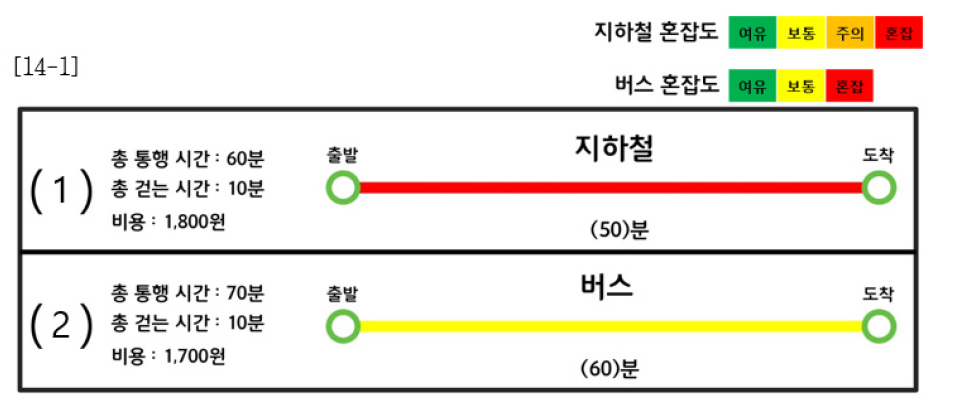
-
Research on Passenger Route Change Behavior Model Improving Urban Railway Congestion during Peak Periods
첨두시간 도시철도 혼잡 개선을 위한 통행자 경로변경 행태분석 연구
-
Dongjin WON, Shin Hyoung PARK, Shin-Hyung CHO
원동진, 박신형, 조신형
- This paper aims to precisely evaluate the value of transportation elements solving the congestion problem of urban railways during peak hours. We …
본 논문은 피크시간대 도시철도 혼잡문제를 해결하기 위한 교통변수의 가치를 정밀하게 평가하고, 혼잡도를 반영한 최적의 출퇴근 대안을 도출하여 적절한 요금할인제도 도입을 위한 새로운 …
- This paper aims to precisely evaluate the value of transportation elements solving the congestion problem of urban railways during peak hours. We propose a new model for introducing an appropriate fare discount system by deriving optimal commuting alternatives reflecting congestion levels. An SP (State Preference) survey has been conducted targeting users of metropolitan public transportation during peak hours to choose between existing trips and alternative trips. The survey data have been employed to estimate parameters based on stand density criteria; and the values of travel variables are evaluated by deriving and analyzing a homogeneity model using Binary Logit Regression (BLR). In the descriptive statistics, 88% of respondents used map applications to choose their travel routes, and 64% responded that they would change their travel method, applying for a fare discount. Additionally, the survey respondents' sociodemographic characteristics and travel behaviors were analyzed in detail, and applicable models were subdivided based on the characteristics of commuters on congested routes, presenting them by group. Through the analysis of the survey results, the sensitivity to travel factors was examined using the coefficients of variables, and different model outcomes were obtained for each group. Travel characteristics are classified into Scheduled Arrival Travel (SAT) and Unscheduled Arrival Travel (UAT). The significant differences are found, especially in congestion, from the result of a homogeneity model. These findings suggest that the introduction of MaaS and the provision of discounted costs suitable for the characteristics of congested travel routes can significantly impact on the choice of travel alternatives.
- COLLAPSE
본 논문은 피크시간대 도시철도 혼잡문제를 해결하기 위한 교통변수의 가치를 정밀하게 평가하고, 혼잡도를 반영한 최적의 출퇴근 대안을 도출하여 적절한 요금할인제도 도입을 위한 새로운 모형을 제안하고자 한다. 피크시간대 수도권 대중교통 이용자를 대상으로 기존의 통행과 통행대안 중 하나를 선택하기 위해 잠재선호 설문조사를 실시하였다. 혼잡도 조사 결과 데이터는 입석밀도 기준으로 모수를 추정하였고, 이항로짓모형(Binary Logit Regression; BRL)을 사용한 동질성 모형을 도출 및 분석하여 통행변수의 값을 평가했다. 통행행태 조사에서는 88%의 응답자가 통행선택을 위해 지도 어플을 이용하였고, 64%의 응답자가 요금할인이 있을 경우 통행 방법을 변경할 것이라고 응답했다. 또한 설문 응답자의 인구사회학적 특성과 통행행태를 세분화하여 분석하였고, 혼잡경로 통근자 특성에 따라 적용 가능한 모형을 세분화하여 그룹별로 제시하였다. 설문결과 분석을 통해 변수의 계수를 통해 통행요인에 대한 민감도를 살펴보고, 그룹별로 상이한 모형 결과를 얻었다. 통행특성은 도착시간이 지정된 통행(SAT)과 도착시간이 지정되지 않은 통행(UAT)으로 분류하고, 동질성 모형을 이용하여 도출 및 비교한 결과 특히 혼잡도에서 유의한 차이를 보였다. 이 결과는 MaaS의 도입과 혼잡한 통행경로 특성에 적합한 할인 비용 제공이 통행대안 선택에 유의한 영향을 미칠 수 있음을 시사한다.
-
Research on Passenger Route Change Behavior Model Improving Urban Railway Congestion during Peak Periods
Journal Informaiton
 Journal of Korean Society of Transportation
Journal of Korean Society of Transportation
Journal Informaiton
Journal Informaiton - close
 Journal of Korean Society of Transportation
Journal of Korean Society of Transportation



